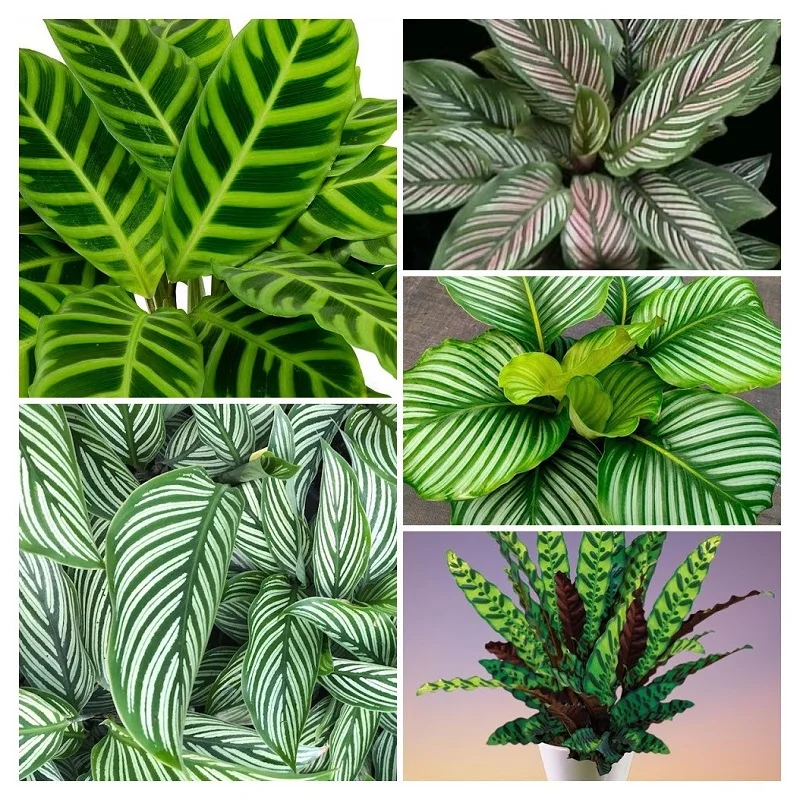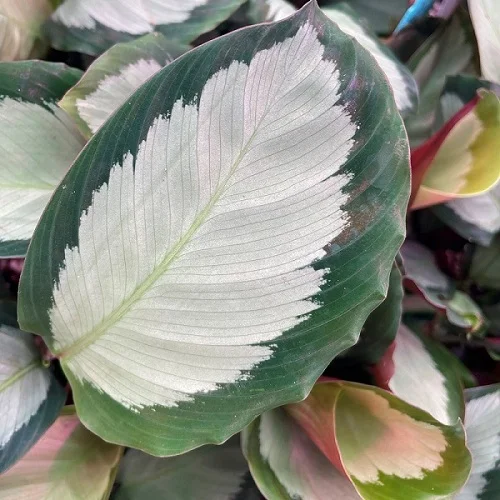How to Propagate Calathea musaica (Calathea Network) in 2 Easy Ways
Some links in this post may be affiliate links
Calathea musaica (Calathea Network) is best propagated by plant division at the beginning of the growing season in spring to early summer. Dividing the plant at this time hastens establishment as it is in the active growth phase. Unfortunately, Calathea musaica will not propagate from leaf or stem cuttings.
Calathea Network is one of the popular Calathea varieties on account of its arching, glossy, green leaves adorned by a criss-crossing (mosaic) pattern, giving it the common name.
Calathea musaica is a magnificent plant which thrives in bright indirect light, average warmth of 18-280C, humidity of 70-80% and moderately moist, rich, well-drained soil coupled with monthly feeding during the growing season. Learn how to grow and care for Calathea musaica indoors.
Calathea Network is easily propagated by plant division. We have herebelow outlined 2 methods by which you can successfully multiply your Calathea musaica.

1. Calathea musaica propagation in soil
Requirements
- Hand gloves
- Clean, sharp pair of scissors or knife
- 6-10 inches pots
- Well-drained potting soil
- Clear polythene sheet or plastic bag
- Watering can and chlorine-free water
Propagating Calathea Network in soil
- Water the plant thoroughly one day before to make it easier to divide and also hasten establishment as a well hydrated plant suffers less shock and takes a shorter time to take root.
- Slip the plant out of its pot, remove excess soil, disentangle the roots and cut away any dead roots.
- With a clean, sharp pair of pruning scissors or knife, carefully divide the plant into several sections. Ascertain that each section has adequate roots and at least 2-3 stems to hasten rooting.
- Select a 6 or 8 inches pot that has a drainage hole to prevent waterlogging to avoid rotting.
- Fill the pot with well-drained potting soil, moisten it slightly and make a hole in the center of the pot. Ensure that the hole is slightly wider than the root base of the section.
- Place the section in the previously made hole and lightly firm the soil around the base while taking care not to bury it too deep; maintain the section at the same soil level it was in the previous pot.
- Liberally wet the soil with chlorine-free water until it comes out through the drainage holes to make sure that the soil is completely wetted.
- Cover the pots with the clear polythene sheet or plastic bag to create a greenhouse effect and to maintain warm humid conditions which hastens establishment of the plants.
- Position the pots in a warm, well-lit place away from direct sunlight to prevent scorching.
- Maintain the soil moist until the new plants are well rooted.
- Once rooted, over a period of two weeks, gradually remove the polythene cover to acclimate the new plants to ordinary growing conditions.
- Repot the new plants into a pot 1 size larger in well-drained soil after which you can begin routine care.
2. Calathea musaica propagation in water
Requirements
- Hand gloves
- Clean, sharp pair of scissors or knife
- Jar of plain water or a propagation station
- Clear polythene sheet or plastic bag
- Well-drained potting mix
- Watering can and chlorine-free water
- Small pots about 8-10 inches
Propagating Calathea Network in water
- Water the plant thoroughly at least 1 day before to make it easier to divide and also hasten establishment; a well hydrated plant suffers less shock and takes a shorter time to take root.
- Remove the plant from its pot, remove excess soil, thoroughly wash the roots with plenty of water, disentangle the roots and cut away any dead roots.
- Carefully divide the plant with a clean, sharp pair of scissors or knife into several sections. Make sure each section has adequate roots and at least 2-3 stems to promote establishment.
- Place each division in a jar of chlorine-free water or in a propagation station while ensuring that the root base is well submerged but keep the foliage above the water surface.
- Cover the set up with the clear polythene sheet or plastic bag to create a greenhouse effect and to maintain warm humid conditions to encourage establishment of the plants.
- Place the set up in a warm, well-lit spot away from direct sunlight to avoid scorching.
- Change the water every 5-7 days to keep it fresh as well as prevent fungal growth.
- When a good amount of new roots have formed on the sections, over a period of two weeks, gradually remove the polythene cover to acclimate the new plants to ordinary growing conditions.
- Transfer the new plants into individual pots at least 1 inch wider than the base of the rooted sections. Use pots with a drainage hole and well-drained soil to avoid getting soggy soil.
- Position the set up in a warm, brightly-lit place away from direct sunlight to prevent scorching and death of the plant.
- Maintain the soil moist until the new plants are well established.
- Once well established, transplant the new plant into a pot 1 size larger in well-drained soil and begin routine care.
You liked it? Share on social media.
Related Content
Amazon Associates Disclosure
Homeplantsguide.com is a participant in the Amazon Services LLC Associates Program, an affiliate advertising program designed to provide a means for sites to earn advertising fees by advertising and linking to amazon.com.





